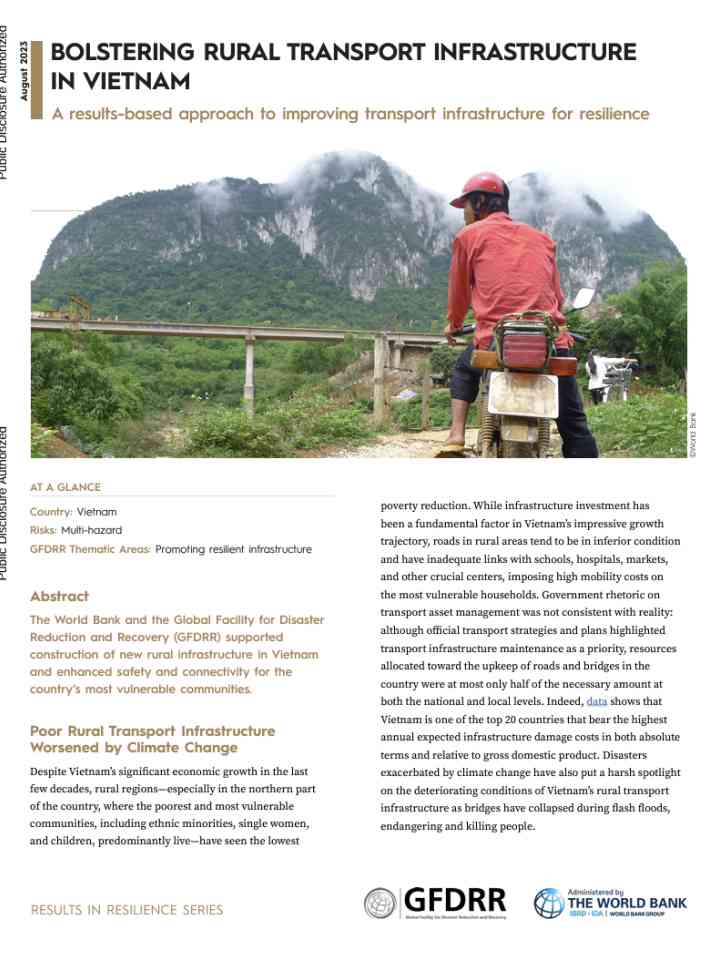Bolstering rural transport infrastructure in Vietnam : A results-based approach to improving transport infrastructure for resilience
The World Bank and the Global Facility for Disaster Reduction and Recovery (GFDRR) supported construction of new rural infrastructure in Vietnam and enhanced safety and connectivity for the country’s most vulnerable communities. Despite Vietnam’s significant economic growth in the last few decades, rural regions—especially in the northern part of the country, where the poorest and most vulnerable communities, including ethnic minorities, single women, and children, predominantly live—have seen the lowest poverty reduction.
The publication provides the following highlighted results:
- Enhanced local accessibility and bridge connectivity for previously isolated communities. Over 1,800 communes, where Vietnam’s most vulnerable communities live, now have reduced transport costs and improved access to schools, hospitals, markets, and other important institutions that enable them to have a better quality of life.
- Increased budget for rural road maintenance. The program succeeded in incentivizing maintenance activities that are indispensable to safeguarding transport infrastructure assets against disrepair and disasters, leading to a course correction of the infrastructure investment approach that was tilted heavily toward capital expenditure.
- Triggered a policy shift toward more effective transport asset management. The adoption of a proactive approach toward transport infrastructure has not only supported both the National Strategy on Rural Transport Development and the Program for Local Bridge Construction but has also made rural communities more resilient against disaster risks exacerbated by climate change.
Explore further
